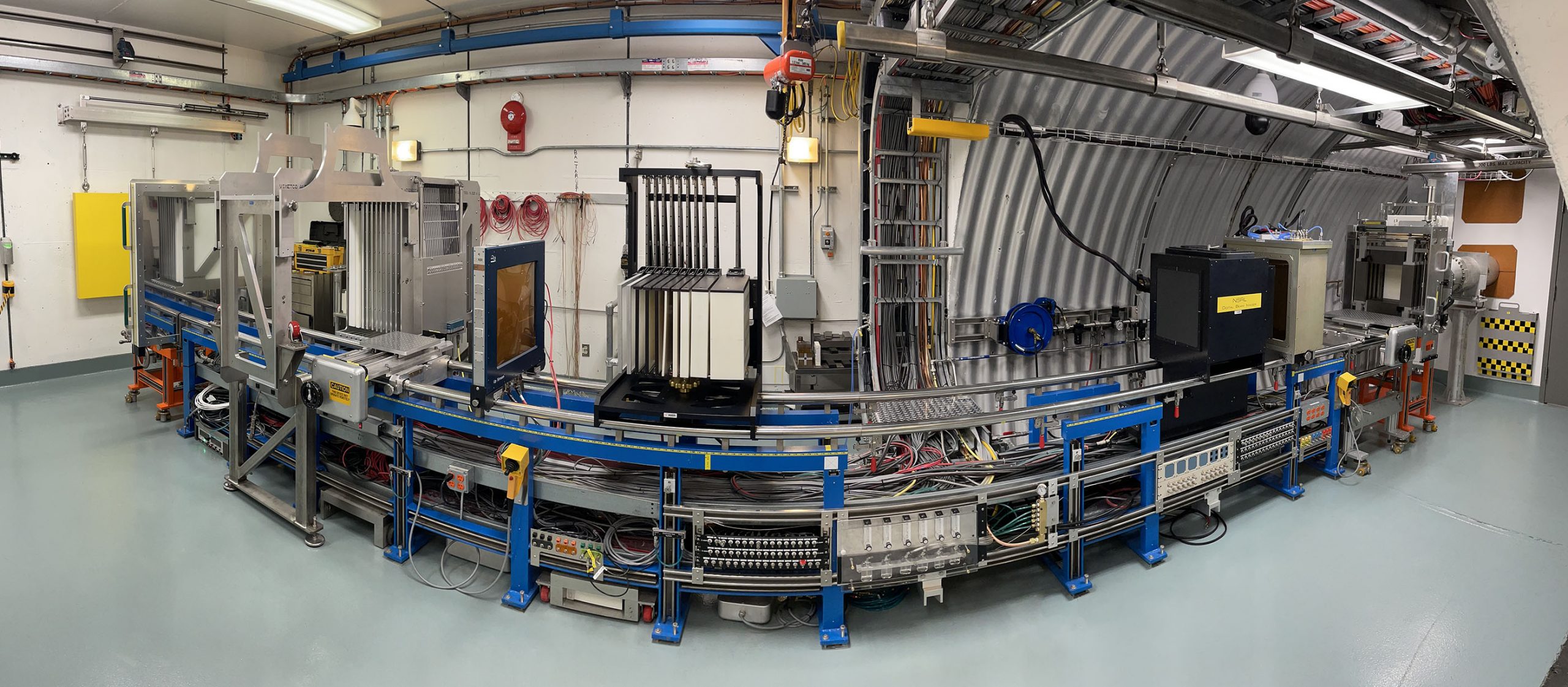
Beam enters the NSRL target room through a vacuum pipe which protrudes from the south wall. Particles exit vacuum through a thin aluminum “vacuum window” then travel “downstream” through the air, passing through beam monitors, experimental apparatuses, and other equipment before terminating in the “beam dump” at the north end of the target room.
A rail system runs along the length of the beam, which allows for equipment, detectors, and experiments to be mounted in its path.
The photograph below shows the upstream half of the NSRL beam line, looking into the beam.
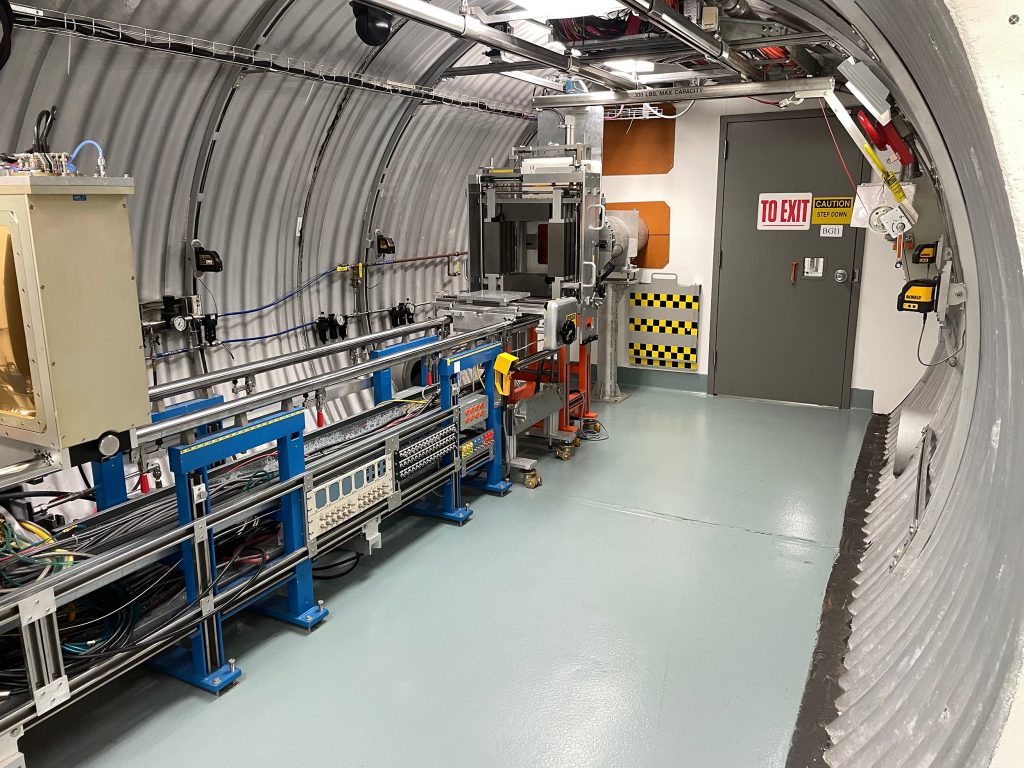
Upstream Testing Area
The overwhelming majority of physics and electronics testing experiments take place in a section of rail very close to the vacuum window which is designated the “upstream test position”. A photograph more closely showing the upstream test position in its most typical configuration is shown below.
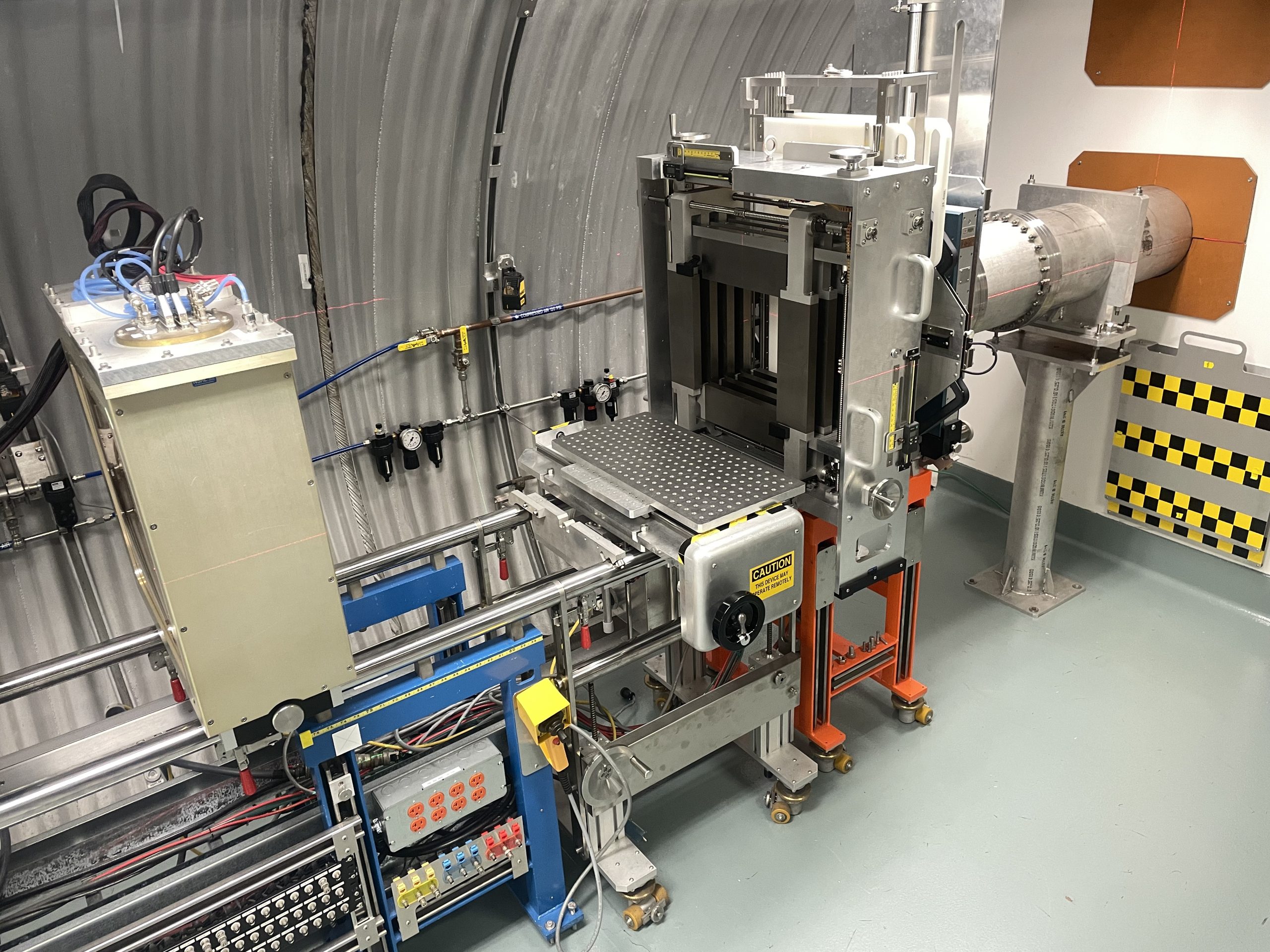
Experimental apparatuses are most commonly mounted to an optical breadboard can be positioned horizontally and vertically with the translation stages it’s sitting on.
Before reaching an experiment, particles first pass through the “QC1” ion chamber which is the primary monitor of real time beam flux.
For most setups, they then pass through the small binary filter which provides a configurable thickness of polyethylene to further slow down the particles if desired.
An adjustable tungsten collimator—which is used to further fine tune the beam’s shape—is most often mounted downstream of the binary filter and just in front of the experiment.
A photograph that highlights these components is shown below. The white foam block at the very left of the frame is where test articles would typically be placed.
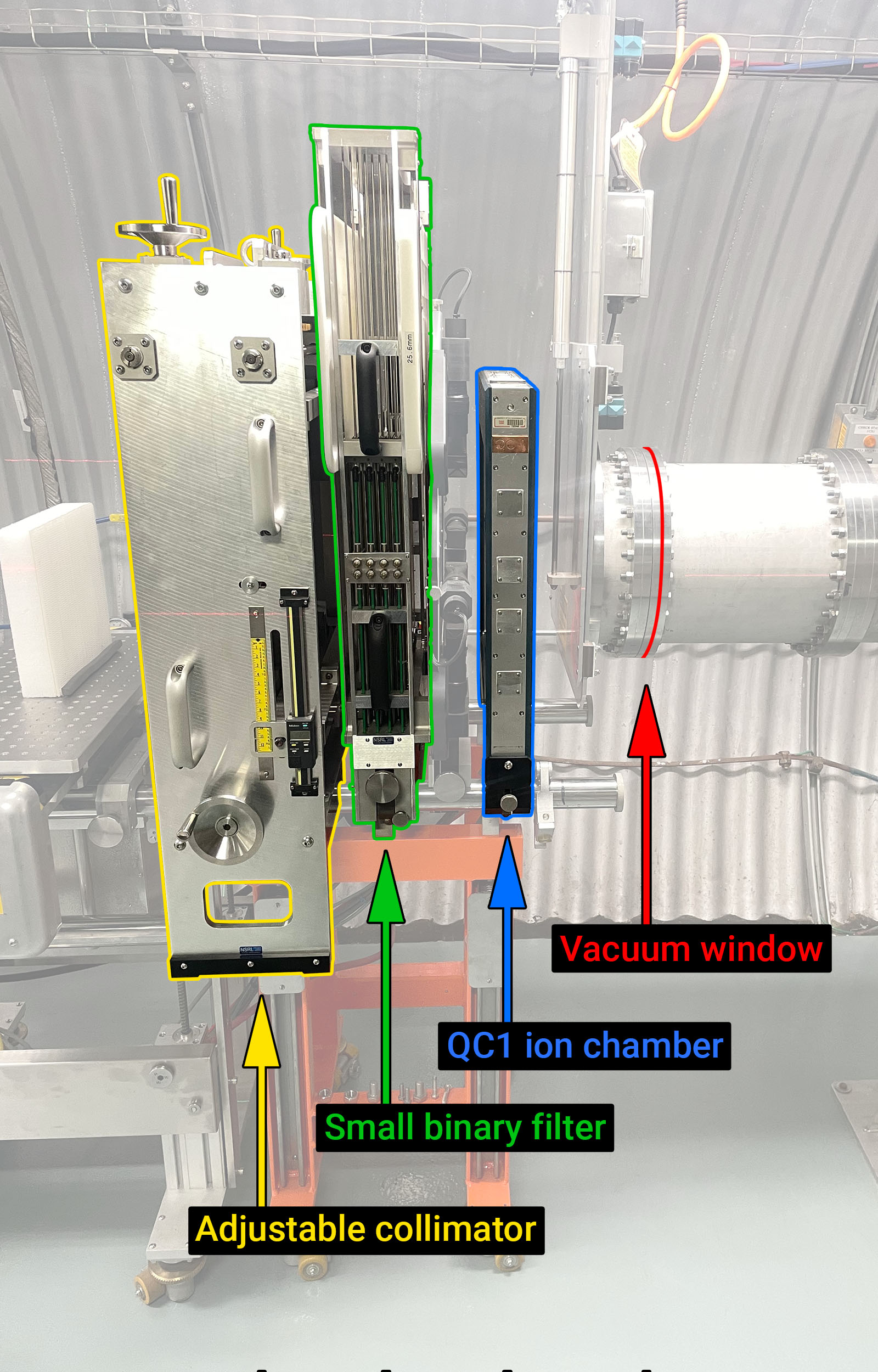
Downstream Areas
[Under construction]
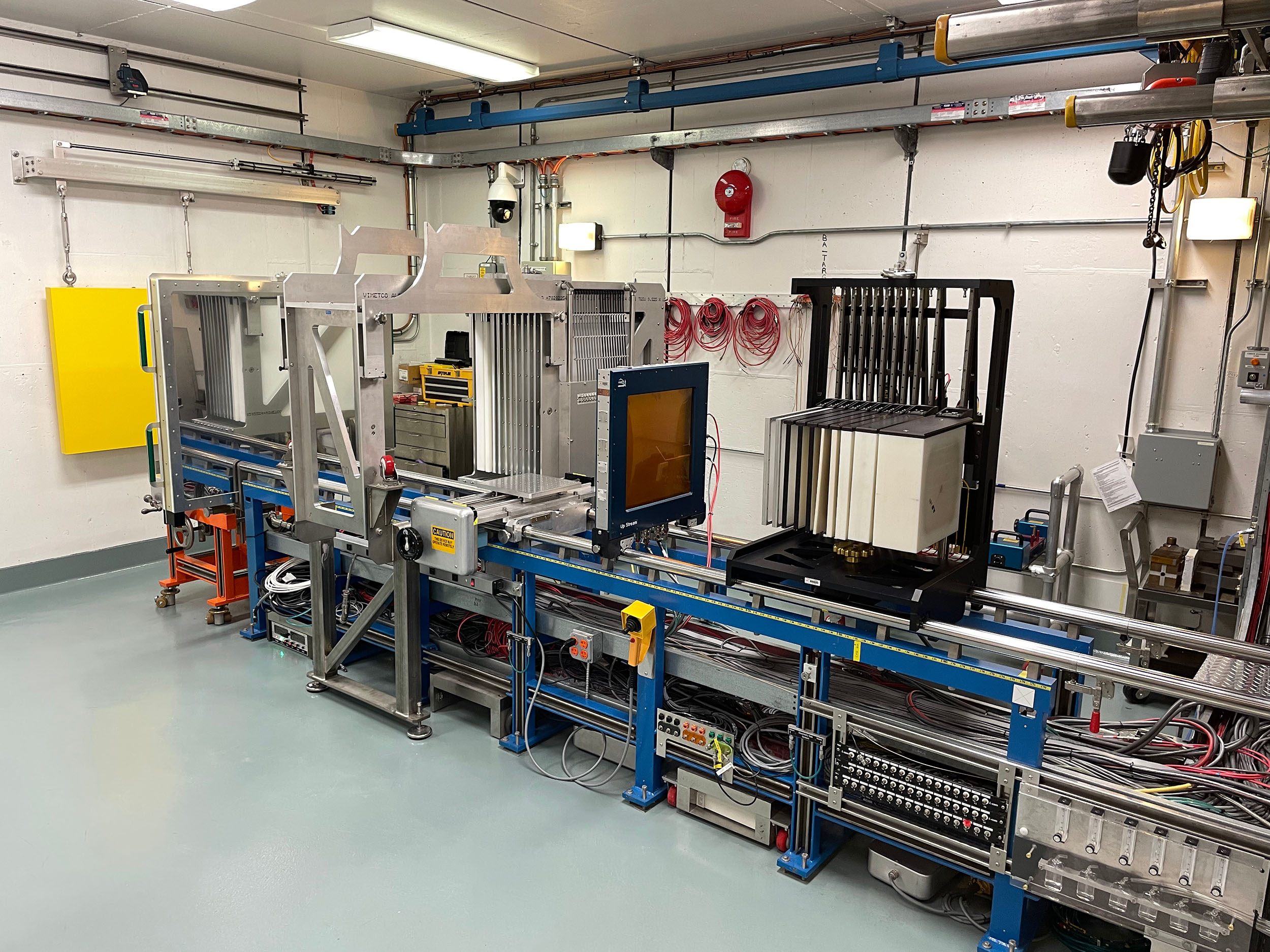
This page was last modified:




